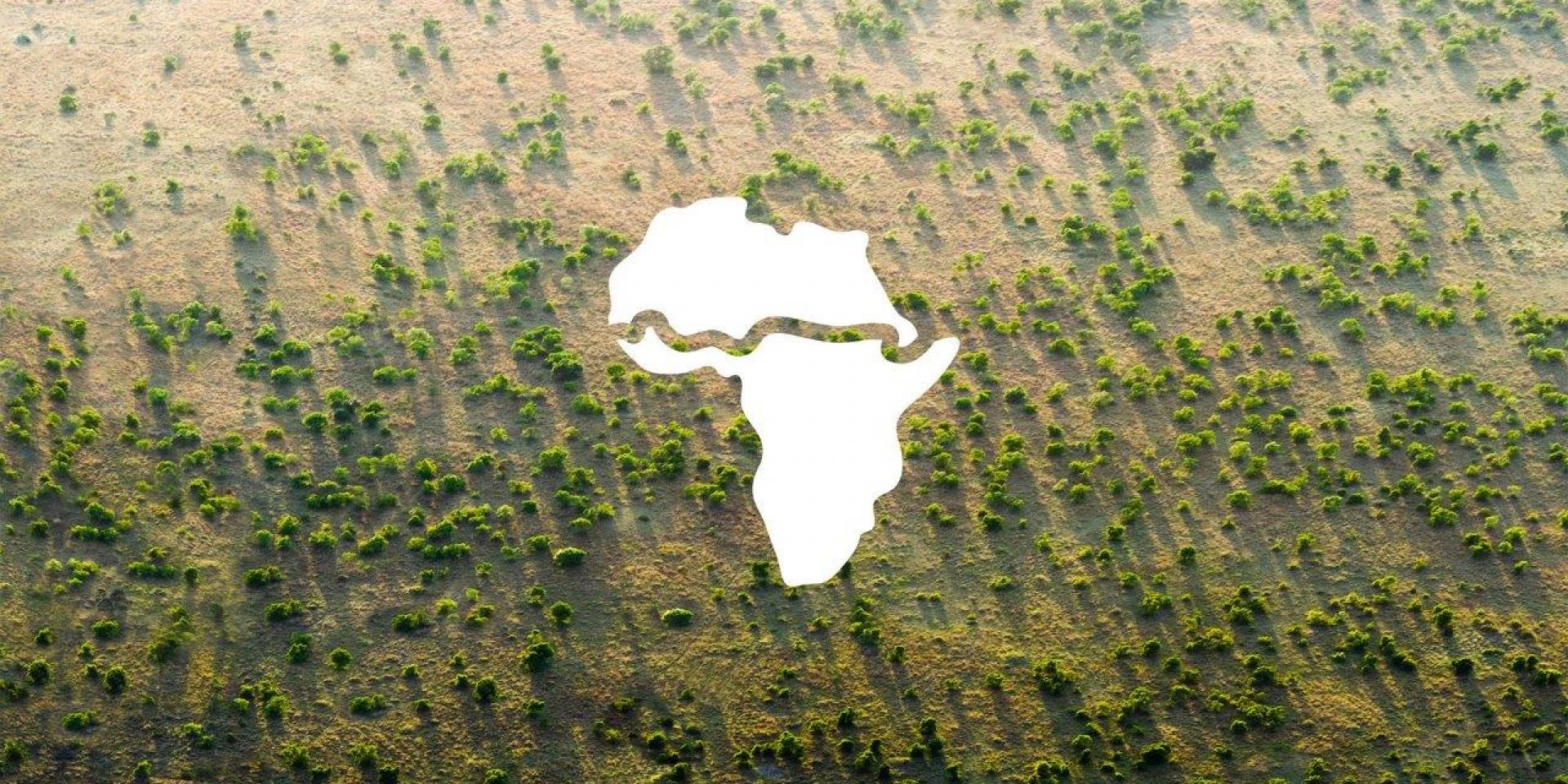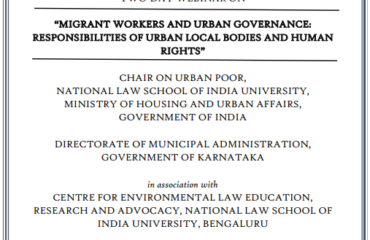Sharon Mathew,
Associate Litigator
Legal Initiative for Forests and Environment (LIFE)
The 3,860km arc like land mass lying to the immediate south of the Sahara desert and stretching east-west across the breadth of the African continent, popularly known as the ‘Sahel’ region of Africa, has become our window into the future of how and to what extent ‘climate change’ will ultimately affect each and every one of us. The Sahel region, comprising of ten states and some 300 million people, is a collective of the largest number of people disproportionally affected by global warming- where temperature increases are projected to be 1.5 times higher than the global average.[1] The Sahel region is characterized by vast stretches of barren, infertile land, life threatening food insecurity and what seems like short periods of relief in a region plagued with a constant state of drought. With exacerbating poverty and farmers and herders routinely having to compete over scare resources, the region has become politically and socially vulnerable and susceptible to violence, inducing a flood of migrants into North Africa and Europe.
Often, it has been misconceived that this land degradation and ‘desertification’ of the Sahel region is a consequence of the expansion or spread of the Sahara Desert. However, this term is a lexical conundrum in that desertification cannot be alluded to deserts but is rather associated with the loss and reduction in what you can do with land in terms of productivity, agriculture, pastures and forest. The primary reason for this is the rampant slashing and burning of forest lands to make way for agricultural practices. The absence of deep-rooted trees, has accelerated the soil erosion and lack of percolation of water and nutrients into the soil, rendering it infertile and eventually barren.
The desertification already affecting 46% of the landscape in Africa and impacting the lives of nearly two thirds of the population of the continent coupled with the fear that this might metastasize to other regions in Africa, has led to the birth of the unified vision of the ‘Great Green Wall Initiative’. The Initiative was launched in 2008 under the auspices of the African Union (AU) and the UN Convention to Combat Desertification (UNCCD) with the objective of growing an 8,000km long barrier of trees across the entire Sahel region, from the Atlantic coast of Senegal to the east coast of Djibouti, making it the largest living structure in the world.[2] The initiative started out as a commitment by the Federal Government to restore millions of hectares of land by way of planting a wall of trees between the Sahara Desert and the Sudanese zone in the South. However, it was observed that mere planting of trees was a wasteful and inefficient approach to land restoration. This was evident by the fact that in the initial phase, over 80% of the trees wilted away and died within two months of being planted[3] because there wasn’t an effective mechanism in place for the maintenance of these plantations. Issues like regular watering and protection of these trees were not accounted for while formalizing the initiative.
In order to address these issues, the initiative took on a more decentralized role, whereby responsibility and onus was placed on the local community to carry out the objectives of the initiative. What was initially envisaged as a wall of trees has now been transformed into a mosaic of greening initiatives specially tailored to local conditions and the need of the community. Today, the focus has shifted to the integrated management of natural resources as a means to transform the livelihoods and landscape of the region. While, a certain region in the Great Green Wall Initiative might have suitable conditions for a specific species, such as the Acacia senegal reforestation for gum arabic production, some have diverse species planted to generate multiple benefits to local communities. Most recently, the concept of ‘Farmer Managed Natural Regeneration (FMNR)’ has been actively advocated in several regions of the Great Green Wall. It is a low cost, sustainable land restoration technique that involves the systematic regeneration and management of trees and shrubs from tree stumps, roots and seeds. It is preferred over actively planting trees because it avoids the depletion of natural aquifers, maintains the current ecology of the Sahel, and utilizes the right species that can help regenerate the land.
In addition to tree planting initiatives, the Great Green Wall initiative has broadened its scope to facilitate communal vegetable gardens, especially run by women in the community in order to economically empower them. The future animal wildlife reserve located in Koyli Alpha is another example where indigenous fauna are currently being reintroduced for biodiversity conservation and the promotion of small-scale ecotourism.[4] The Initiative has diversified the activities under its objective to include the installation of roads and hydraulic infrastructure to facilitate the maintenance of these greening projects.
While, other countries have previously tried to adopt similar greening initiatives, a handfull have lived up to the benchmark set by the inhabitants of the Sahel region. As early as in the 1940’s, Soviet Leader, Joseph Stalin launched a drive to plant more than 10,000 square miles of steppe land with trees. However, all these efforts have been in vain as all these plantations wilted and died within 20 years of the initiative. Similarly, Algeria tried planting a 930 mile ‘green dam’ in its southern desert in the 1970’. The public authorities outsourced the work to a single institution, thereby obscuring the role of local communities. As a consequence of this, long term post-investment management was not feasible. At present, even China is undertaking large scale reforestation projects. However, the success or failure of this venture is still to be determined. It is focused on the plantation of trees to stop rapidly encroaching deserts and combat climate change. Some scientists argue that the type of forests planted and their location, have limited the effectiveness that it sought to achieve. In addition to the fact that non-native species are being planted, in some places, accelerated ecological degeneration has been observed as a consequence of these plantations putting pressure on precious water resources in arid and semi-arid regions.
However, a decade in and roughly 15% underway, the initiative is already bringing life back to Africa’s degraded landscapes at an unprecedented scale, providing food security, jobs and a reason to stay for the millions who live along its path.[5] The success of the initiative can be attributed to the balance achieved between the use of science, technology and research on one hand and the capitalisation of the traditional knowledge vested in the members of the local community on the other hand to guide the choice of tree species for reforestation in light of the existing climatological, agrometeorological and hydrological conditions. Further, concentrated efforts to ensure long term management of these renewed resources by empowering the local community has been integral in maintaining the success of the initiative. The initiative aims to restore 100 million hectares of currently degraded land, sequester 250 million tonnes of carbon and create 10 million jobs in rural areas. In doing so, it addresses 15 out of the 17 Sustainable Development Goals set by the United Nations General Assembly in 2015. It has grown beyond the limited scope of tree plantation and has taken up the prodigious role of being a trail blazer in combating the issues of poverty, hunger, building resilience to climate change and creating employment opportunities among others.
[1] ‘UN: Sahel region of the most vulnerable to climate change’, Climate Centre Available At: https://www.climatecentre.org/news/1066/un-sahel-region-one-of-the-most-vulnerable-to-climate-change
[2]The Great Green Wall Available at https://www.greatgreenwall.org/about-great-green-wall
[3] ‘Wall or Mosaic? Fighting desertification in the Sahel’, Kendrick Foster, Harvard Political Review Available at http://harvardpolitics.com/world/wall-or-mosaic-fighting-desertification-in-the-sahel/
[4]‘The Great Green Wall for the Sahara and the Sahel Initiative as an opportunity to enhance resilience in Sahelian landscapes and livelihoods’, DeborahhGofner, Regional Environmental Change Volume 19, Issue 5 (1417-1428)
[5]The Great Green Wall Available at https://www.greatgreenwall.org/about-great-green-wall



